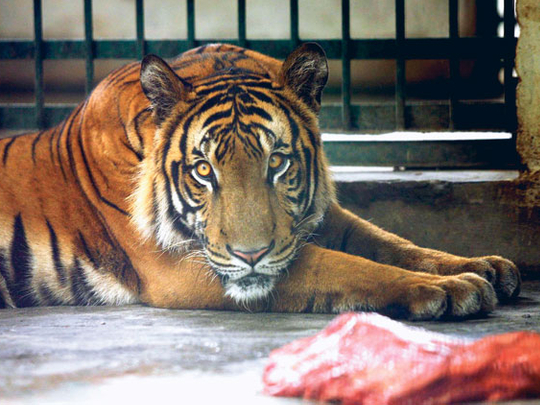
Dhaka: Bangladesh earned a name for being the home of Royal Bengal Tigers along with neighbouring India but this year, the big cats killed the highest number of people this century, a phenomenon feared to be caused by loss of their habitats.
"We are witnessing a growing trend of deaths caused by tigers. Fifty people died last year, the highest number of deaths we recorded in the past 100 years, while the figure was 24 in 2007," forest conservator Tapan Dey told Gulf News.
He said the loss of big cat habitats and food sources in southwestern Sundarbans, the world's largest mangrove forest which is the habitat of the last 440 Bengal Tigers, according to a 2004 survey.
Dey's comments came two days after Bangladesh joined the World Tiger Day celebrations promising effective steps to save the endangered big cats while it planned for an effective presence in the 13-nation Tiger Conservation Summit in St. Petersburg in September to plan out urgent measures to save the species.
"I will attribute the phenomenon (growing number of deaths) on human intrusion in Sundarbans . . . men are not good food for big cats but are easy prey, while the tigers are quickly losing their main food there because of poaching," chief executive of Bangladesh Wildlife Trust Professor Anwarul Islam told Gulf News.
Islam, also a senior professor of zoology department of the premier Dhaka University, said nearly 450,000 families live around the Sundarbans, a stretch of 6,017 square kilometres of forest "while their interactions with tigers are growing day by day causing the higher death rates."
He said the Trust recently carried out a survey on 800 families living around the Sundarbans. Nearly half of them admitted they had tasted the deer meats at last once in the past year.
"The survey reflects how the tigers are losing their main food source," he said. The last survey by the forest department and UN Development Programme (UNDP) in 2004 estimated the number to be around 440, while in Indian side of the Sundarbans the tiger population was around 270.












